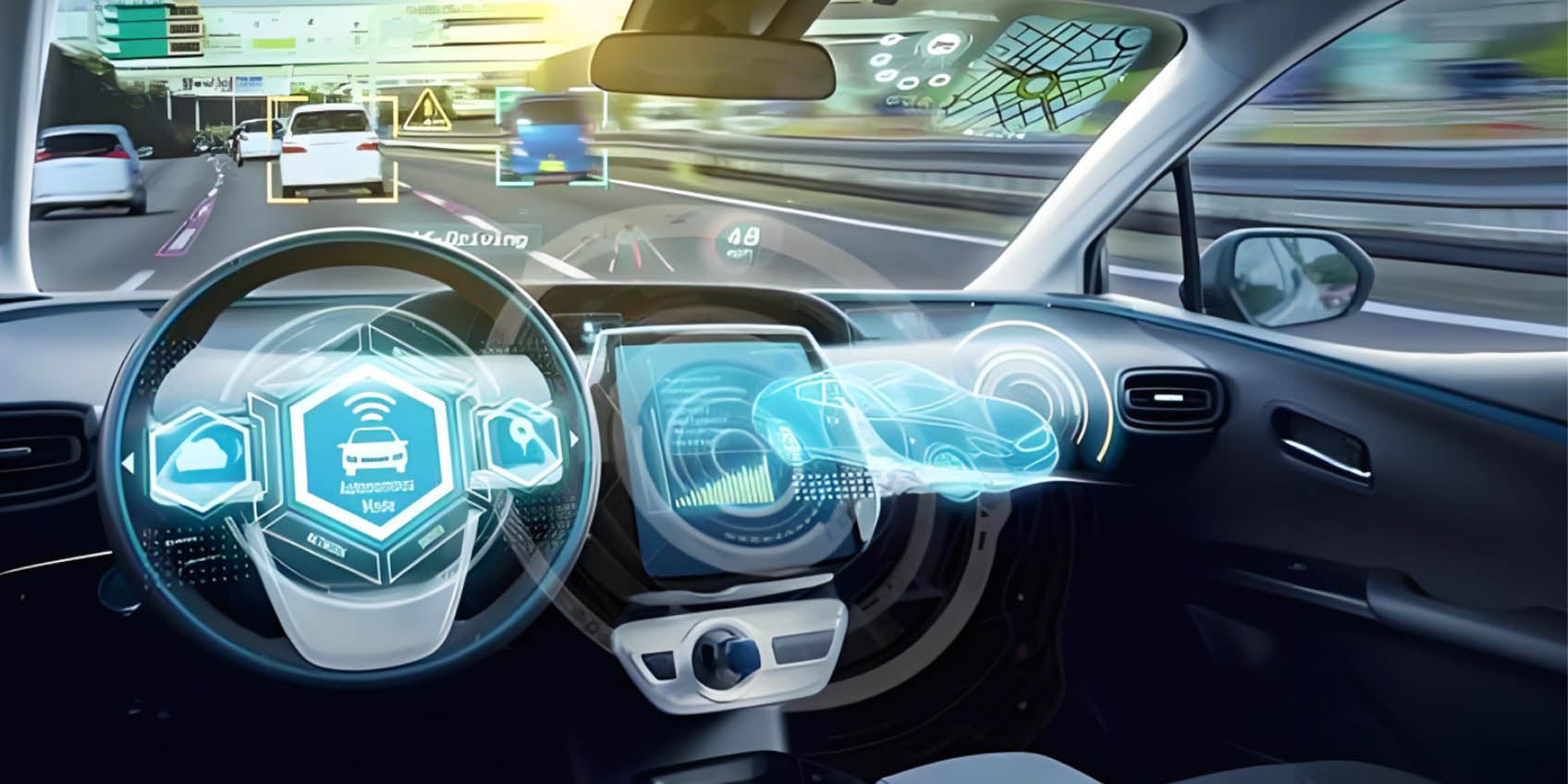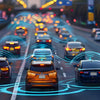Autonomous Navigation: Key Driver of Smart Transportation & Automation

With the rapid development of artificial intelligence (AI), sensor technologies, and big data, autonomous navigation technology is becoming the driving force behind intelligent transportation systems, self-driving cars, and industrial automation. Autonomous navigation enables robots, autonomous vehicles, and other intelligent devices to accurately sense their surroundings, plan paths, and make decisions without human intervention, completing complex tasks. This technology not only enhances efficiency and safety but also drives revolutionary transformations in multiple industries.
What is meant by autonomous navigation?
Autonomous navigation technology integrates various sensors, computer vision, AI algorithms, and deep learning models, enabling devices to sense the environment in real-time, process data, and autonomously plan paths and make decisions. Unlike traditional navigation methods, autonomous navigation offers stronger intelligence and adaptability, allowing devices to react in dynamic and complex environments. For example, self-driving cars use lidar, cameras, GPS, and other sensors to sense the surrounding environment, adjust their driving routes in real-time, avoid obstacles, and comply with traffic regulations.

Smart Transportation and Autonomous Vehicles
Core Technology of Autonomous Driving: Unmatched Precision and Safety
Autonomous navigation technology is the core of autonomous vehicles, enabling them to sense, decide, and execute driving tasks without human intervention. This technology is based on the integration of advanced sensors like lidar, radar, cameras, and ultrasonic sensors, along with powerful AI algorithms. These sensors and algorithms work together to precisely perceive the environment, detect and analyze obstacles, pedestrians, traffic signals, lane markings, and more.
Using this data, the autonomous driving system can make real-time decisions and adjust driving routes based on road conditions and traffic signals. For example, when detecting an obstacle ahead, the vehicle can immediately apply the brakes or take evasive action to avoid a collision. At complex intersections, the vehicle can plan the optimal route using traffic flow data and real-time maps.
Enhancing Traffic Safety and Efficiency: Surpassing Human Driving Limitations
Autonomous driving technology eliminates human driving errors such as fatigue, distraction, or delayed reaction, which increases road safety and reduces accidents. Furthermore, autonomous vehicles can navigate through complex urban environments with ease. For example, when encountering heavy traffic, the vehicle can automatically choose less congested routes, reducing unnecessary stops and delays, improving overall traffic flow.
On highways, autonomous vehicles can collect real-time traffic data to adjust speed, maintain a safe distance from the car in front, and switch lanes according to road conditions. This precise control makes vehicle movement smoother, minimizing safety risks caused by human errors.
Future Trends: Vehicle-to-Everything (V2X) and Smart Infrastructure
As Vehicle-to-Everything (V2X) technology advances, autonomous vehicles will no longer be isolated systems but will communicate and collaborate with surrounding smart infrastructure. V2X enables vehicles to share real-time data with other vehicles, traffic lights, road infrastructure, and traffic management systems. For example, smart traffic signals can dynamically adjust based on a vehicle's position, speed, and traffic flow, optimizing the entire road network's throughput. When an autonomous vehicle approaches an intersection, the signal can turn green in advance, reducing wait time and preventing congestion.
Furthermore, collaboration between autonomous vehicles and other vehicles will further enhance traffic safety. If a vehicle encounters an emergency situation on a highway, it can communicate with surrounding vehicles using V2X technology, sharing danger information so that others can adjust their routes or speeds to prevent accidents.
Smart traffic systems will significantly enhance overall road efficiency. In the future, urban traffic management will no longer rely solely on traditional traffic signal control but will use AI and big data analysis to dynamically optimize traffic signals, adjust traffic flow, and even make real-time adjustments based on weather conditions, traffic accidents, or emergencies. Supported by V2X and smart infrastructure, autonomous vehicles' navigation systems will become more precise, adapting quickly to complex road environments and traffic changes.

Social Benefits and Impact of Autonomous Driving
With the development of V2X and smart traffic systems, future roads will no longer rely solely on traditional traffic management methods but will shift to fully intelligent traffic systems. This will not only improve travel efficiency and road safety but also have a profound impact on urban energy consumption, environmental protection, and resource distribution. Autonomous vehicles will reduce traffic accidents, lower property damage and personal injuries caused by human driving errors, and promote the development of shared mobility models, further reducing urban congestion and energy consumption, contributing to a greener, low-carbon transportation future.
In summary, the future smart transportation system will be a highly integrated network where all traffic participants—vehicles, pedestrians, and traffic infrastructure—will exchange real-time data, creating a more efficient, safer, and environmentally friendly road management system. Autonomous vehicles will play a key role in this system, driving the global transportation industry's transformation toward smarter, automated, and sustainable development.
Smart Logistics and Autonomous Delivery
The Automation Revolution in Logistics Delivery: Reducing Costs and Increasing Efficiency
Autonomous navigation technology is revolutionizing the traditional logistics and delivery industry, driving it towards greater efficiency and automation. In the past, the logistics industry faced high transportation costs and significant labor consumption, but with autonomous navigation technology, companies can achieve more efficient goods handling, delivery, and warehousing management. Autonomous navigation systems enable delivery drones, autonomous delivery vehicles, and automated warehouses to independently execute delivery tasks, greatly reducing reliance on human labor.
Autonomous delivery vehicles, equipped with sensors and high-precision positioning technology, can autonomously plan the optimal delivery route, avoid traffic obstacles, adjust speed, and safely navigate through different environments. They can automatically adjust routes based on real-time road conditions, reducing delays caused by traffic congestion and ensuring timely delivery.
At the same time, delivery drones showcase impressive flexibility, especially in densely populated urban areas or remote locations, bypassing ground traffic limitations and enhancing delivery efficiency. Drones can pick up packages from warehouses and deliver them to customers within minutes, reducing delivery time and improving customer satisfaction.
In warehousing, automation technology also plays a critical role. Autonomous robots equipped with navigation systems efficiently handle, sort, and store goods, while smart sorting systems adjust operations based on real-time orders. These robots avoid collisions, locate items, and adjust handling strategies based on different types of goods, improving warehouse operational efficiency. Through collision avoidance, item recognition, and precise scheduling, automated warehouses significantly enhance overall warehouse management efficiency.
Future Development: A Fully Automated Logistics Ecosystem
The logistics industry is set to enter an era of full automation and intelligence, supported by big data, AI, IoT, and machine learning technologies. Adaptive logistics systems will intelligently schedule tasks, optimize routes, and control costs based on real-time data. The combination of drones and autonomous delivery vehicles will form a global distribution network, handling everything from urban last-mile delivery to long-distance logistics in remote areas. These systems will dynamically optimize routes, reducing delays and congestion during delivery, while improving logistics response speed and efficiency.
In the intelligent logistics ecosystem, blockchain technology will be employed to ensure transparency and traceability, improving supply chain management's security and reliability. Additionally, intelligent sensing technologies and autonomous transport tools will help reduce energy consumption and provide greener, more sustainable delivery solutions. This not only reduces costs but also aligns with global sustainability and environmental goals.

Financial Perspective: Investment Opportunities and Market Potential
From a financial perspective, the rapid development of smart logistics and autonomous delivery offers enormous market potential for investors. As the industry moves toward higher levels of automation and intelligence, companies in this field are becoming increasingly attractive in capital markets. With the support of AI, big data analysis, and IoT, the return on investment in the smart logistics sector will continue to grow. Early investment in these technologies could yield substantial returns. Additionally, government and industry policies are providing strong support for the rapid growth of the smart logistics industry.
As consumer demand for faster logistics and higher service quality grows, smart logistics will not only improve operational efficiency but also enhance customer loyalty, contributing to long-term profitability. This market potential has attracted widespread attention from investors and is expected to be a key investment area in the coming years.
In the future, as intelligent technologies continue to advance, the logistics industry will undergo profound changes, moving towards full automation, intelligence, and sustainability, becoming a key pillar of the global economy.
Industrial Automation and Smart Manufacturing
Revolutionary Applications of Autonomous Navigation in Manufacturing
In the manufacturing industry, particularly in precision sectors such as automotive, electronics, and machinery, autonomous navigation technology has brought significant changes to automated production lines. Intelligent robots using autonomous navigation can move flexibly in complex production environments, performing precise assembly, testing, welding, painting, and other tasks. For example, automated welding robots can autonomously adjust welding paths and angles, ensuring consistent quality for each joint. On assembly lines, robots not only transport parts but also adjust task execution orders based on real-time data, improving production efficiency.
Rise of Smart Factories: More Efficient Production Processes and Fewer Errors
With the widespread adoption of Industry 4.0 and IoT, autonomous navigation technology will play an increasingly important role in future smart factories. Robots will no longer perform only pre-set tasks but will adapt to changes in the production environment in real-time, adjusting production strategies. By collaborating with enterprise management systems, material supply chains, and quality inspection systems, smart factories will achieve higher production efficiency, lower failure rates, and shorter production cycles. Autonomous navigation will further reduce human intervention, lower production costs, and enhance production precision, ultimately driving the global manufacturing industry's transformation.
Future Outlook: Flexible Production and Autonomous Decision-Making
The future of industrial production will not only be highly automated but will also be flexible and adaptive. With further advancements in autonomous navigation technology, robots will dynamically adjust tasks based on production needs, no longer limited to fixed workflows. For example, intelligent robots can rapidly adjust production speeds and strategies based on market demand and production tasks, even customizing products based on customer orders. The future of smart factories will be more flexible and intelligent, capable of responding to fast-changing market demands and delivering higher production efficiency and lower operational risks.
Conclusion: The Future of Autonomous Navigation Technology
Autonomous navigation technology is fundamentally changing the way industries operate. From self-driving cars to smart logistics, from automated production to the development of smart cities, the role of autonomous navigation will become even more significant




